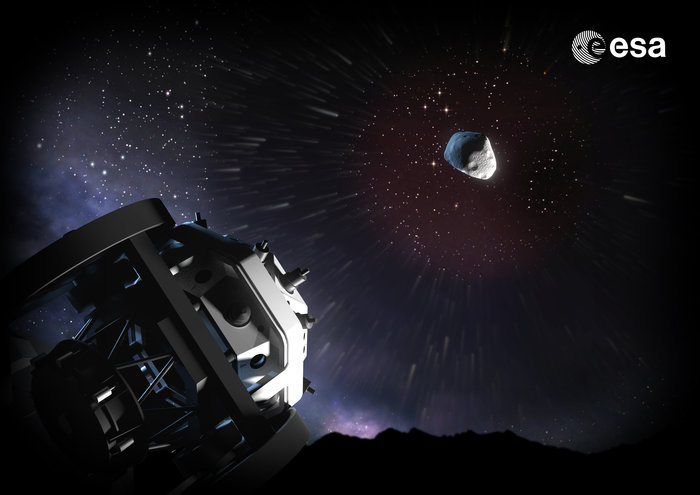Automatic detection and identification of potentially hazardous near-Earth objects
The Earth is constantly bombarded by small, usually rocky bodies that are flung toward it, most originating from the asteroid belt. Fortunately, our planet is surrounded by a thin but vital atmosphere that protects it from the vast majority of these visitors, causing them to burn up before they can do any damage.
Some celestial objects are however much bigger, and if they were to strike Earth, they could do significant damage to people and infrastructure.
Understanding the likelihood and characteristics of a potential asteroid strike are fundamental to strengthening resiliency, by boosting the capacity in countries around the world for early warning systems, risk reduction and management of any strike-caused disaster.
As part of the global effort to hunt risky asteroids and comets, ESA is developing an automated telescope to conduct nightly sky surveys, known as a the ‘Flyeye’ telescope due to its multiple optics and extra-wide field of view. This telescope is the first in a future network that will completely scan the sky and automatically identify possible new near-Earth objects (NEOs) for follow up by human researchers.
Having the ability to predict if and when a dangerous object could strike Earth means measures can be put into place to minimise damage or, in future, to divert them before impact. The first Flyeye telescope is under construction near Milan, Italy.


